The World Wide Fund for Nature-Australia (WWF-Australia) has published its first Renewable Superpower Scorecard, an in-depth report and assessment of Australia’s transition to renewable energy and sustainable economic power. The report shows solid progress in some quarters, but a long way to go if we are to reach the 700% renewables by 2050 needed for superpower status.
On the surface, the scorecard reveals little that we don’t know, Australia’s states are leading the race to become renewable superpowers and the federal government’s policies are lagging behind.
The scorecard ranks the progress of various Australian governments based on three measures of renewable ‘superpowerdom’, namely, cleaning up the electricity system, electrifying transport, buildings and industry, and exporting renewables and renewable-powered products to the world.
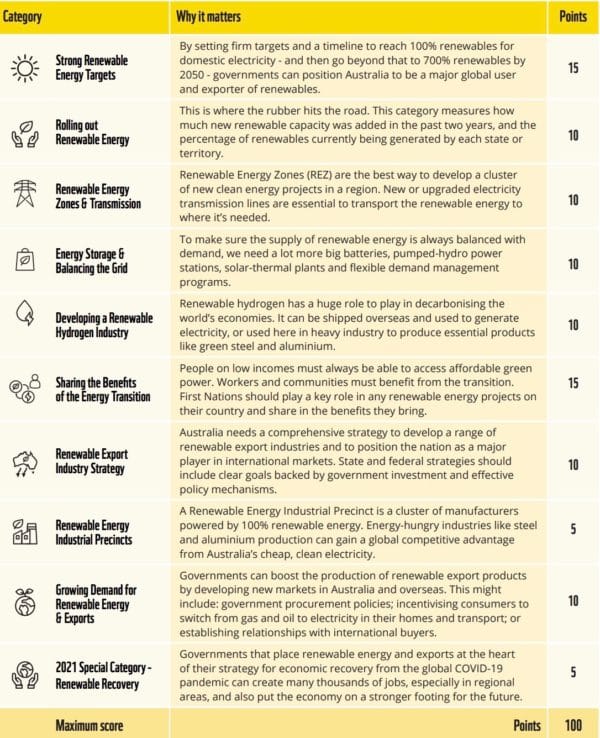
The scorecard
Across these metrics Tasmania has made a break from the peloton of other states with South Australia (SA) close behind and New South Wales (NSW) along with Victoria (VIC) in hot pursuit. Tasmania has already achieved 100% renewables, is legislating the largest renewable energy target in the world, and is ambitious in its progress toward green hydrogen production.
South Australia’s 500% renewables aspiration puts it in clear second-place, further propelled by its early adoption of utility-scale energy storage and grid balancing.
WWF-Australia has NSW and VIC tied in third place with the federal government lagging all the way back in seventh. and as Nicky Ison, WWF-Australia’s energy transition manager made clear, Australia is extraordinarily blessed with the renewable resources that will power the world in this century and centuries to come, and the federal government’s sluggardly pace is not requisite to our “once-in-a-lifetime opportunity to harness this potential to create jobs and wealth for all Australians long into the future.”
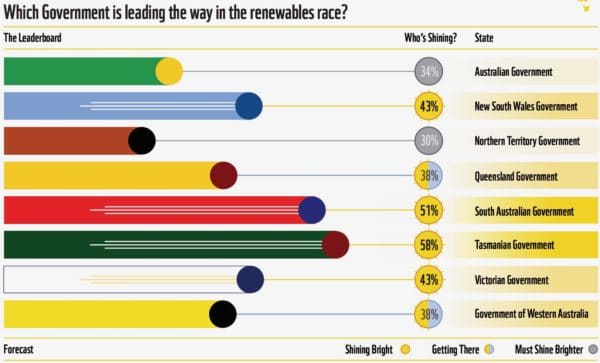
“The federal government should be the primary agents selling our renewable energy to the world,” continued Ison, “but our analysis shows the states are currently doing the heavy lifting. Despite some positive programs, the focus and scale of action at the national level currently falls short of what is needed to give Australia the best chance of becoming a renewable superpower.”
Also lagging, but not to the dawdling extent of the federal government, are Western Australia (WA) and Queensland (QLD), which WWF-Australia’s analysis shows are under-capitalising on their resources.
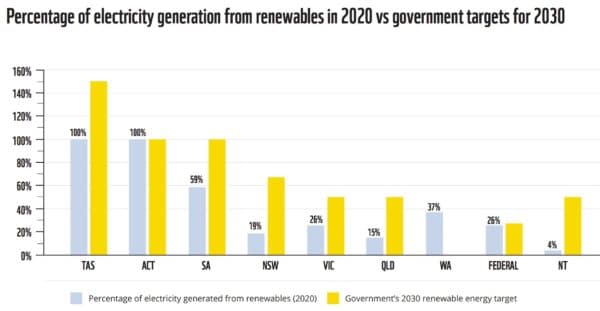
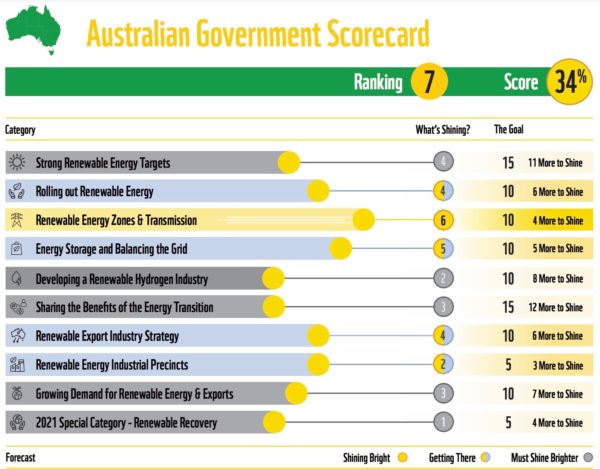
Ison stressed that WWF-Australia’s analysis shows that as a whole, Australia is not doing near enough to achieve the superpower status promised by its resources. With roughly $7 billion in clean energy stimulus measures invested across all governments in 2020, there is far more that needs to be done if we even want to draw level with countries like South Korea, France and Germany.
“Our analysis shows that to become a real superpower,” said Ison, “we should look to use renewable energy to produce seven times the amount of electricity we currently consume. That would allow us to meet our electricity demands, transition our transport, industries and buildings to renewables from gas, coal and oil, and export excess power and zero-carbon products to the world. Australia can become the world’s leading exporter of renewables by 2030 if we act now.”
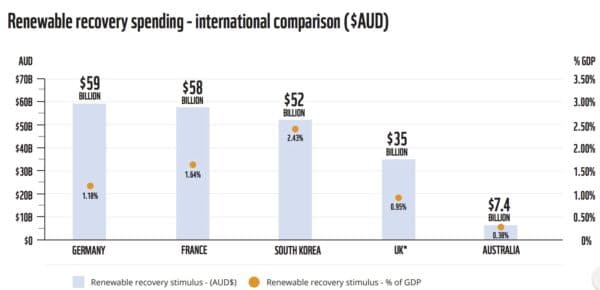
WWF-Australia is also offering solutions, calling on the federal budget to back initiatives like Renewable Energy Industrial Precincts for the transition of manufacturing industries. On top of that WWF-Australia calls on all states, territories and the federal government to develop costed Renewable Energy Exports Industry Strategies, to accelerate the renewable energy rollout, to deliver necessary infrastructure and, citing Canada’s “Just Transition Task Force”, to ensure that this energy transition is not merely a repetition of old unsustainable forms of power, but that Indigenous Australians, workers, regional communities and low-income earners are all included and benefitted by this brave new world.
The reception
Ross Garnaut, the man who has driven much of Australia’s general ambition to become a renewable energy superpower, said that “there is a chasm between a world that quickly breaks the link between modern economic growth and carbon emissions, and a world that fails to do so. The side of the chasm we are now on is a dangerous place. The other side has immense opportunity for Australian prosperity. WWF in their Renewables Superpower Scorecard does us a great service in measuring our position against the chasm.”
Smart Energy Council (SEC) chief executive John Grimes added that Australia needs a strong economy and a safe climate, and “you can’t have one without the other and Australia won’t have a strong economy and a safe climate unless it becomes a global renewable energy exporting superpower. I commend WWF on this critical work.”
This content is protected by copyright and may not be reused. If you want to cooperate with us and would like to reuse some of our content, please contact: editors@pv-magazine.com.
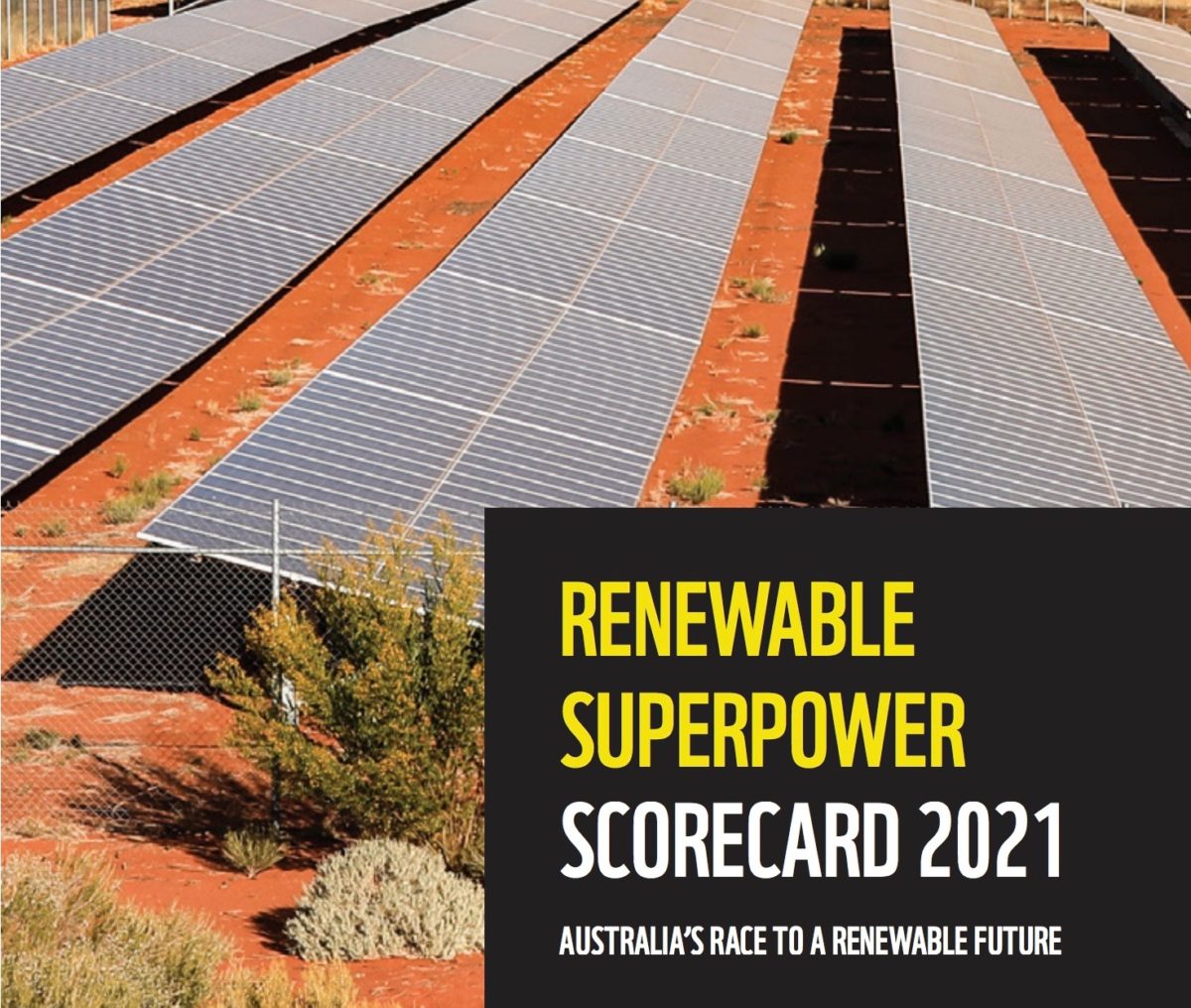








By submitting this form you agree to pv magazine using your data for the purposes of publishing your comment.
Your personal data will only be disclosed or otherwise transmitted to third parties for the purposes of spam filtering or if this is necessary for technical maintenance of the website. Any other transfer to third parties will not take place unless this is justified on the basis of applicable data protection regulations or if pv magazine is legally obliged to do so.
You may revoke this consent at any time with effect for the future, in which case your personal data will be deleted immediately. Otherwise, your data will be deleted if pv magazine has processed your request or the purpose of data storage is fulfilled.
Further information on data privacy can be found in our Data Protection Policy.